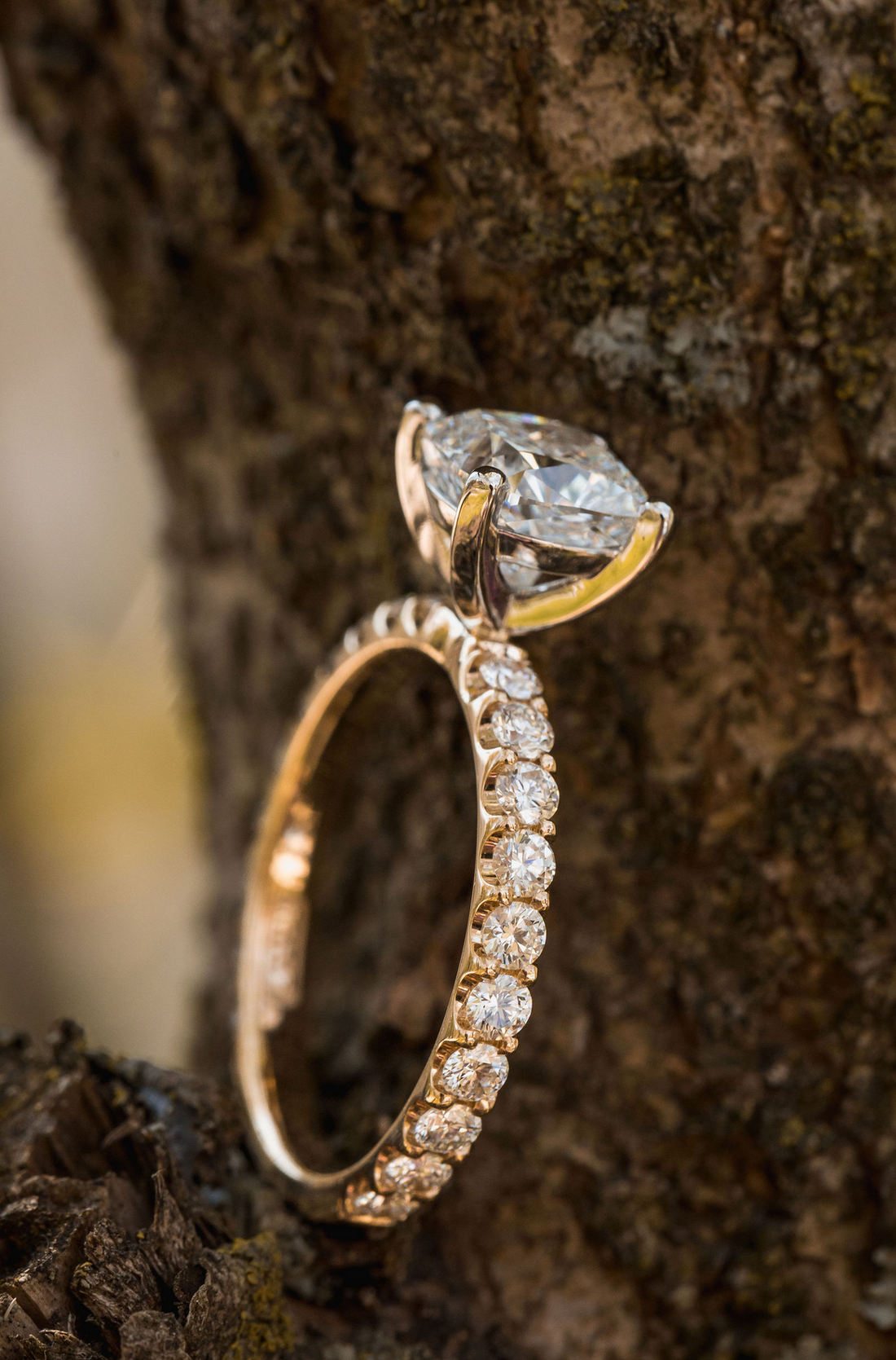
In Defense of 18k
Jake FoxShare
Intro
Many people, including other jewelers, have made the claim that 18k is not as suited for daily wear. They say that the increased purity leads to a softer material, and that 14k is a hardier choice for those with active lifestyles.
A quick internet search will turn up countless sources supporting this idea. Buying guides published by popular online retailers, blogs, and various sources all seem to agree.
There's just one problem: It isn't true.
Hardness
First, let's look at where the idea came from.
We'll turn to the Mohs Hardness scale. This is the same scale we use to determine the hardness of various gems and minerals, and is a popular citation by those warning of 18k's softness.
According to the Mohs Scale:
| Sterling Silver | 2.5 - 3.0 |
| 14k Gold | 3.5 - 4.0 |
| 18k Gold | 2.8 |
| Platinum | 4.0 - 4.5 |
I know some of you are furrowing your brows here, wondering why I'm sharing a chart that seems to go against my own claim.
There is more to durability than just hardness, and I'll get into that shortly, but the bigger issues at hand are:
1. The Mohs scale isn't actually meant for metals, and
2. It does not use a universal definition for "hardness."
The Mohs scale describes minerals' resistance to scratching.
Diamond is a 10 on the Mohs scale, meaning the only thing that can scratch it is another diamond. Next is sapphire, at a 9. That means sapphire can scratch itself or anything below it, but cannot scratch a diamond. An 8 cannot scratch a 9 or 10, but can scratch another 8 or below; and so on.
The scale isn't absolutely accurate, as it pertains to visible scratches, and omits microscopic scratching which can still be damaging in certain cases.
It is also a qualitative ordinal scale, meaning the numbers reflect statistical placement rather than quantitative amounts or degrees. For example: A 10 is 4x harder than a 9, which is twice as hard as an 8. 10, 9, and 8 do not indicate any specific amount of hardness, they simply point to a placement on the scale.
Many jewelers use the Mohs scale for the sake of simplicity. We've all learned it already, and it's an easy scale to grasp, and to share with customers. The issue is that it was developed for a specific purpose, and does not directly apply to a discussion on metals.
The standard measurement for metal hardness is the Vickers Hardness Test. Rather than being based off of scratching, the Vickers number describes a metal's resistance to indentation. The higher the number, the harder it is.
According to the Vickers hardness test:
| Sterling Silver | 75 HV |
| 14k Yellow Gold | 140 HV |
| 18k Yellow Gold | 155 HV |
| Platinum | 115 HV |
The first thing you'll notice is that 18k is actually harder than 14k, not the other way around. In fact, 10k yellow gold is at 145 HV, making 18k harder than that as well!
I specified yellow gold on this scale because color does make a difference here.
All gold comes out of the ground yellow. The way we change its color is by alloying it - which means mixing the gold with other metals. This process changes color, as well as other attributes such as malleability and hardness.
Pure 24k gold is only a 30 HV, even softer than fine silver, but mixing it with metals like copper, silver, and zinc to create the various alloys can make it suitable for daily wear.
White gold ranges from 165 - 210 HV, with 18k again being the hardest of the group. On top of that, most white gold is rhodium plated. Rhodium is harder than steel, at a whopping 800 - 1000 HV; though it is applied in thin layers which will wear away over time.
Rose gold, likewise, ranges from 125 to 195 HV, with 18k again at the top of the heap.
Going by a hardness test that is actually intended for metals, 18k is consistently harder than its 10k or 14k counterparts. This isn't just our opinion, this is a scientifically proven reality.
Other Factors
That's still not the whole story though.
I mentioned that there is more to durability than just hardness.
18k is also more heat resistant, more resistant to chemical corrosion, and more durable against oxidation and tarnishing.
18k is more malleable, and more ductile than 14k. While there could be some debate over how this affects durability, it ultimately makes it easier to shape 18k into more delicate designs without as significant a compromise in durability. This can also be a benefit in stone-setting.
Increased malleability also means that when 18k does scratch, you're less likely to lose metal than with more brittle alloys, as the metal likes to "stick" to itself. Any hand engraver can tell you that 18k is more challenging to engrave for this very reason.
Any of these metals can be hardened both by the way they are alloyed, and through work-hardening. Other factors such as casting versus hand fabricating or die striking will also have an affect on the metal's durability.
No matter what material is being used, a proper design and skilled craftsmanship are tremendously influential factors. A poorly made 18k ring will not be inherently superior to a well-crafted piece in 14k. That being said, if you are looking at two pieces which were created with the same care and craft, and are identical aside from metal choice, the 18k gold piece will be better suited for daily wear and more durable than the 14k.
Choosing the Right Metal
We believe that 14k and 18k are each suited for daily wear. The differences in durability favor 18k, but they are subtle when it comes to daily wear.
When choosing which material you prefer for your piece, we recommend focusing on value and characteristics.
Value
18k is 75% gold, meaning there is more of the actual precious material in 18k than in 14k or lower alloys. The flip-side of this is that 18k will cost more than 14k.
To some, the purity of the metal is important, and knowing that there is more gold in your gold is worth that extra cost. To others, being able to afford a little more for your money is more alluring - especially when on a budget.
There isn't a right or wrong here. It's all about what is important to you as the buyer.
Characteristics
While the difference in durability is subtle on a day-to-day basis, there are two more factors that are more noticeable. Each comes from the higher gold percentage.
- Because 18k contains more gold, it is more dense, and thereby feels heavier. We love the feeling of 18k gold, and that added weight can contribute to the perceived value as well.
- If you're looking at yellow gold, there is a difference is in color. There are several alloys of 18k gold, but in general 18k yellow will be a richer, warmer color that looks closer to its pure form.
If you're buying yellow gold, we always recommend taking a look at 18k for this reason. If you're looking at a two-tone piece that will have yellow and white metals side-by-side, we strongly recommend using 18k yellow gold for the added definition and contrast.
With rose golds there is often less difference, and when it comes to white gold, color is not a factor.
Conclusion
The most important thing is that you pick a metal you love. Whether it's white, yellow, rose, or green; gold or platinum; 18k or 14k: Our goal is to help you pick something that is beautiful, and best suited for your lifestyle.
Don't settle for less than the best.
Experience the difference with J. Fox Custom!
